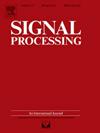WaveGRU-Net: Robust non-contact ECG reconstruction via MIMO millimeter-wave radar and multi-scale semantic analysis
IF 3.4
2区 工程技术
Q2 ENGINEERING, ELECTRICAL & ELECTRONIC
引用次数: 0
Abstract
With the rising demand for telemedicine, non-contact heart beating monitoring has attracted significant interest due to its non-invasive and patient-friendly attributes. However, conventional approaches are typically limited to detecting the peaks of the Electrocardiogram (ECG), making the accurate extraction of ECG intervals challenging. This paper proposed a novel method for non-contact ECG signal reconstruction utilizing multiple-input-multiple-output millimeter-wave radar, enabling precise reconstruction of comprehensive ECG features and capturing nuanced variations in cardiac activity. First, Two-Dimensional beamforming is employed to enhance the radar signal of interest. The echo inevitably contains interference from random body movements and chest displacements caused by respiration. The interference from random body movements can be effectively suppressed by using a cumulative energy spectrum analysis. Next, the phase information representing the combined respiratory and cardiac micro-movements is extracted. Then, the phase is inputted into the WaveGRU-Net model, which is an advanced neural network based on the Convolutional Neural Network-Long Short-Term Memory architecture, to reconstruct heartbeat signals and ECG waveforms. The proposed method successfully separates respiratory and cardiac signals in the time-frequency domain, yielding a refined ECG reconstruction enriched with detailed semantic features that encapsulate subtle cardiac dynamics. Experimental results demonstrate the proposed method has strong semantic representation capabilities.
WaveGRU-Net:基于MIMO毫米波雷达和多尺度语义分析的鲁棒非接触心电重建
随着远程医疗需求的不断增长,非接触式心脏跳动监测因其非侵入性和对患者友好的特性而引起了人们的极大兴趣。然而,传统的方法通常仅限于检测心电图(ECG)的峰值,这使得准确提取ECG间隔具有挑战性。本文提出了一种利用多输入多输出毫米波雷达进行非接触式心电信号重建的新方法,能够精确重建全面的心电特征并捕捉心脏活动的细微变化。首先,采用二维波束形成技术增强目标雷达信号。回声不可避免地包含随机身体运动和呼吸引起的胸部移位的干扰。利用累积能谱分析可以有效地抑制随机体运动的干扰。接下来,提取代表呼吸和心脏联合微运动的相位信息。然后,将相位输入到基于卷积神经网络-长短期记忆结构的高级神经网络WaveGRU-Net模型中,重建心跳信号和心电波形。该方法成功地在时频域中分离了呼吸信号和心脏信号,生成了一个精细的ECG重构,该重构具有丰富的详细语义特征,包含了微妙的心脏动力学。实验结果表明,该方法具有较强的语义表示能力。
本文章由计算机程序翻译,如有差异,请以英文原文为准。
求助全文
约1分钟内获得全文
求助全文
来源期刊

Signal Processing
工程技术-工程:电子与电气
CiteScore
9.20
自引率
9.10%
发文量
309
审稿时长
41 days
期刊介绍:
Signal Processing incorporates all aspects of the theory and practice of signal processing. It features original research work, tutorial and review articles, and accounts of practical developments. It is intended for a rapid dissemination of knowledge and experience to engineers and scientists working in the research, development or practical application of signal processing.
Subject areas covered by the journal include: Signal Theory; Stochastic Processes; Detection and Estimation; Spectral Analysis; Filtering; Signal Processing Systems; Software Developments; Image Processing; Pattern Recognition; Optical Signal Processing; Digital Signal Processing; Multi-dimensional Signal Processing; Communication Signal Processing; Biomedical Signal Processing; Geophysical and Astrophysical Signal Processing; Earth Resources Signal Processing; Acoustic and Vibration Signal Processing; Data Processing; Remote Sensing; Signal Processing Technology; Radar Signal Processing; Sonar Signal Processing; Industrial Applications; New Applications.
 求助内容:
求助内容: 应助结果提醒方式:
应助结果提醒方式:


